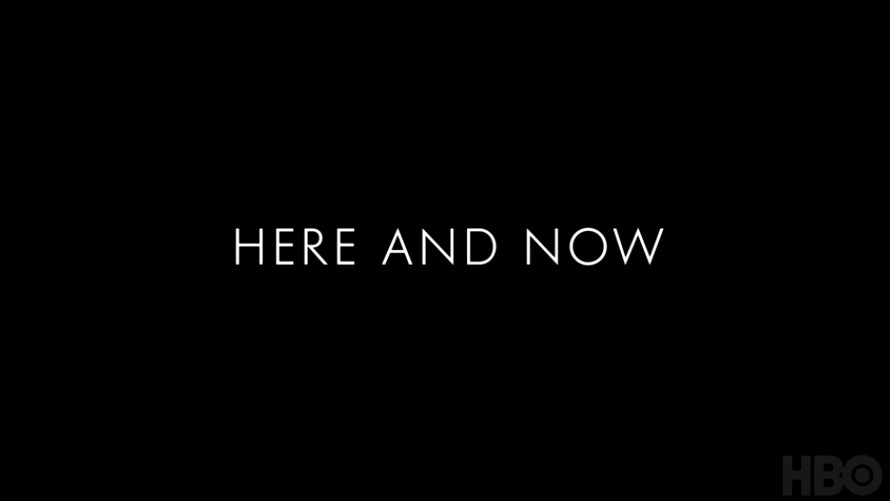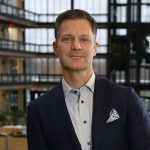
Why the future of customer experience lies in the present
May 25, 2021
Three ways that organizations are under utilizing AI in their customer experience
June 1, 2021Employee experience, the war for talent and what to avoid in a back to the office strategy – Interview with Steve Lucas of iCIMS
Today’s interview is with Steve Lucas, CEO of iCIMS, a talent cloud company. Steve joins me today to talk about changes in working patterns over the last 12 months, the findings from their new research report: 2021 Workforce Report: Respond, Recover, Readapt, employee experience and the competition for talent.
This interview follows on from my recent interview – Your values are designed to attract, but also to repel – Interview with Borzou Azabdaftari of The Falcon Lab — and is number 390 in the series of interviews with authors and business leaders that are doing great things, providing valuable insights, helping businesses innovate and delivering great service and experience to both their customers and their employees.
NOTE: A big thank you goes out to the folks at SugarCRM for sponsoring my podcast this month.
SugarCRM, the provider of the #1 rated Customer Experience platform, is trusted by thousands of companies in over 120 countries to help them achieve high-definition CX. Recently they released their new CRM and Sales Impact Report which surveyed 1,000 sales professionals from around the globe on what’s driving (or stalling) revenue and customer engagement. The report also asks a provocative question: Are companies on the cusp of a customer relationship crisis. To find out the answer check out and download the report here.
Here’s the highlights of my chat with Steve:
- Published a new research report: 2021 Workforce Report: Respond, Recover, Readapt
- Hiring is rebounding. It’s a bit asymmetric but it’s still happening the world over.
- 91% of companies across the world plan to or are hiring this year. That’s double what it was in 2020.
- Virtual hiring is here to stay.
- Hiring people through video and SMS is on the rise.
- Hiring through SMS is a real thing.
- One trend that’s a little bit counterintuitive….we are seeing job openings for manufacturing and construction jobs with massive spikes. Construction alone is up 37% year over year in the US. But, applications are down 17%.
- People’s work preferences are changing.
- A CEO of a large national organic healthy food grocer in the US told Steve that they are looking at this data and trying to figure out where people are applying for jobs because that’s where they’re now going to build stores because currently they just can’t hire enough people.
- That’s flipping the retail location model on its head because normally you would build stores based on projected consumer density.
- But, now they are building stores based on potential employee density. And, that is supported by the massive shift to online buying and grocery delivery services.
- We are seeing some profound changes in the jobs market.
- Diversity, equity, and inclusion efforts cannot be pushed to the side. Data proves that diverse teams perform better and achieve higher ROI.
- The idea that talent is equally distributed but opportunity is not is going to change as time zones and locations become largely irrelevant.
- We are also seeing a changing nature of what we call work.
- We have seen a massive uptick in ‘gig’ work within organisations as many have been forced to redeploy their employees.
- The distribution of opportunity is going to radically reshape the talent marketplace.
- Many companies are still trying to figure out what a hybrid working model looks like.
- The hard part for all of this is going to be: how do you build culture? How do you bring people together and how do you build community?
- If the intent in getting back into the office is to do the same work that you could do from home then you are doing it wrong.
- Coming back into the office has to be profoundly more rotated towards community and culture building.
- Inclusion going forward is also going to mean vaccinated and unvaccinated.
- When it comes to the employee experience and getting onboarding right the pendulum has swung hard towards the use of crowd sourced employee videos.
- We need to really look more closely at the experience of the leader at all levels because they are the connective tissue that hold a lot of organizations together.
- People quit managers not companies.
- The CEO sets the tone for culture. But, the CEO is not the company to a frontline employee. Their manager is the company.
- So, every single manager, every single people leader in your organization sets the tone for what the company is to your employees.
- You need to be obsessed with developing leadership for all of your managers down to how do you handle employee development, conflict resolution, how do you embody values, what does customer obsession mean to you and if someone on your team maybe misses the mark, how do you coach them up?
- Example: The American Heart Association draws in about 225,000 new candidates per year and using iCIMS’ talent cloud and their automation they are able to save 1,000+ hours (or 6 months) of productivity saved per year, allow their recruiters to spend more than 50% more time building relationships with candidates and increase their sourcing activity by 200%.
- Example: Lynden, a leading transportation company sees a 97% increase in applicant volume, a 49% increase in mobile app usage and a driver turnover rate 60% below industry average using iCIMS.
- If companies do not adapt they will lose this talent war.
- According to Korn Ferry data by the year 2030 there will be somewhere in the neighborhood of 85 million jobs globally that are unfilled.
- How do you continue to develop and maintain personalization while driving automation?
- There’s no way companies can scale or drive hiring talent at scale without automation.
- Steve’s Punk CX word: Counter-culture
- Steve’s Punk CX brand: Microsoft
About Steve
 Steve joined iCIMS in 2020 as the chief executive officer, bringing 25 years of extensive leadership experience in enterprise software. Lucas is leading the vision and plans for iCIMS into its next phase of growth with product innovation and strategic acquisitions. He is focused on solidifying iCIMS’ position as the world’s leading talent cloud company that touches the lives of more than 35 million workers across the globe.
Steve joined iCIMS in 2020 as the chief executive officer, bringing 25 years of extensive leadership experience in enterprise software. Lucas is leading the vision and plans for iCIMS into its next phase of growth with product innovation and strategic acquisitions. He is focused on solidifying iCIMS’ position as the world’s leading talent cloud company that touches the lives of more than 35 million workers across the globe.
Lucas brings expertise in building strong workforces from holding senior executive roles at global enterprise software organizations including Adobe, Marketo, SAP, Salesforce.com, and BusinessObjects.com. During his tenure as CEO of Marketo, he led a multi-year product expansion and growth strategy resulting in the acquisition of the company by Adobe in 2018, making it the largest acquisition in Adobe’s history.
As a type 1 diabetic, he dedicates much of his time to raising awareness, education and funds for the illness. He has served on the board of the American Diabetes Association and frequently volunteers with the Children’s Diabetes Foundation, where he speaks with type 1 diabetic youth about managing their diabetes and overcoming obstacles.
He is also passionate about inclusivity and has implemented programs and strategies at previous enterprise companies that have successfully improved diversity and inclusion. Lucas strongly believes that a leader’s number one priority should be building a winning, more inclusive and diverse workforce.
Lucas holds a bachelor’s degree in business from the University of Colorado, is a published author and serves on multiple philanthropic and education boards.
Check out iCIMS and the research report: 2021 Workforce Report: Respond, Recover, Readapt, say Hi to them and Steve on Twitter @icims and @nstevenlucas and connect with Steve on LinkedIn here.





